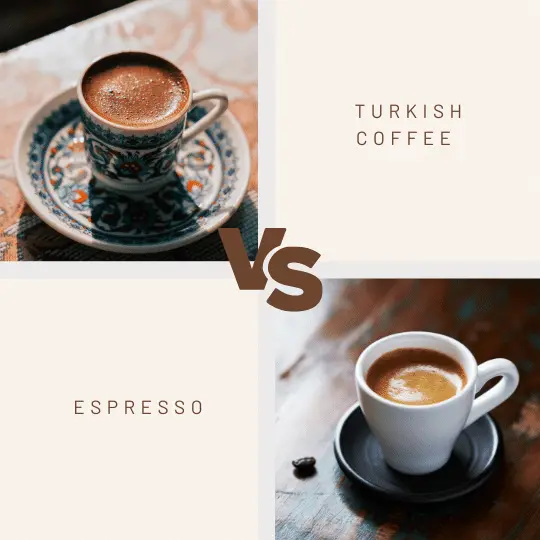
Would you rather have a Turkish coffee or Espresso coffee? The answer to the versus question can be character-telling. The debate itself represents a division between the old cool and the new age. Although far from the more heated Big Mac vs Whopper or Pepsi vs Coke, the Turkish coffee vs Espresso comparison remains a polarizing debate . To keen coffee lovers, such debates are necessary for the culture.
What Is Turkish Coffee?
Turkish Coffee traces its roots back to the 15th century when traveling merchants introduced the beverage into the Ottoman Empire. By the next century, it was already an empire-wide phenomenon and a personal favorite of Sultan Suleiman the Magnificent.
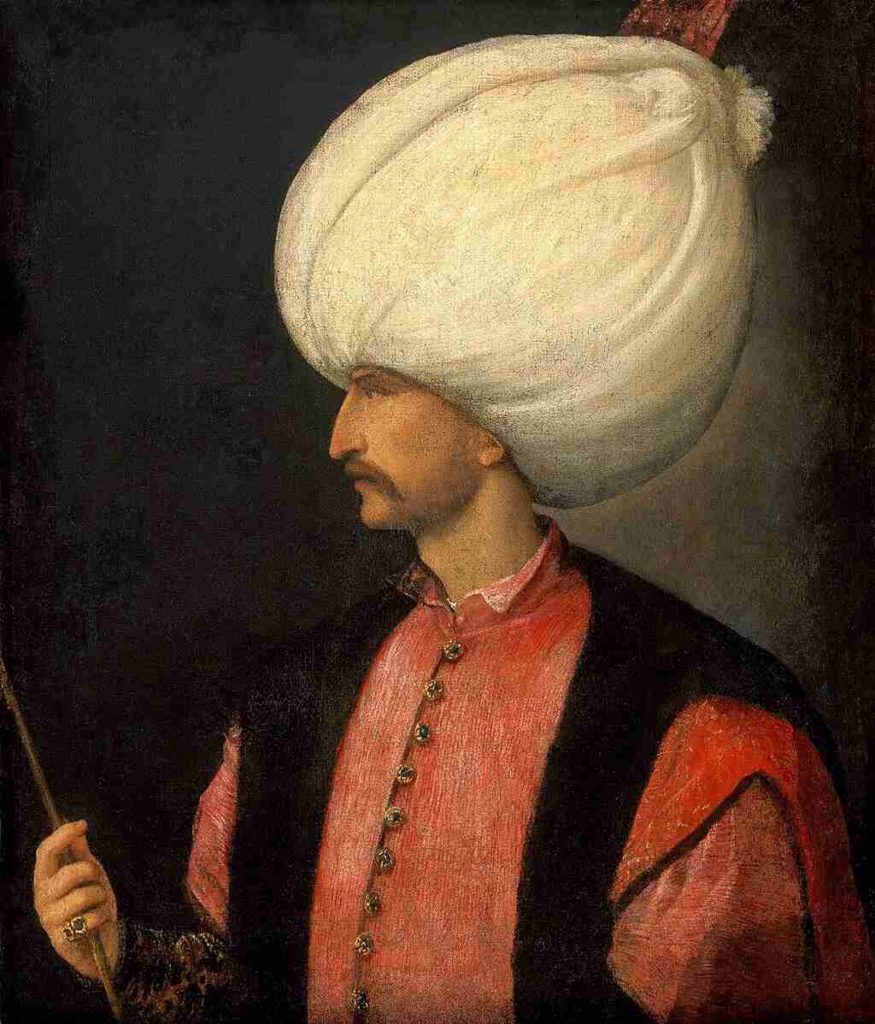
After the drink became notorious for its strong nature, Sultan Murad IV banned it in the 17th century on the basis of Islamic laws against drugs. However the patrons were hell-bent on risking it all for their favorite beverage and the ban was lifted after the Sultan’s death.
Since then, it has penetrated Britain, France, and spread to the rest of the world.
Why Is It Famous?
Besides being a really delicious coffee drink, it became intertwined with Ottoman culture. In times past, the Ottoman Empire stretched across Europe, Asia and Africa. This vast territory allowed the Turkish beverage to penetrate every corner of the empire.
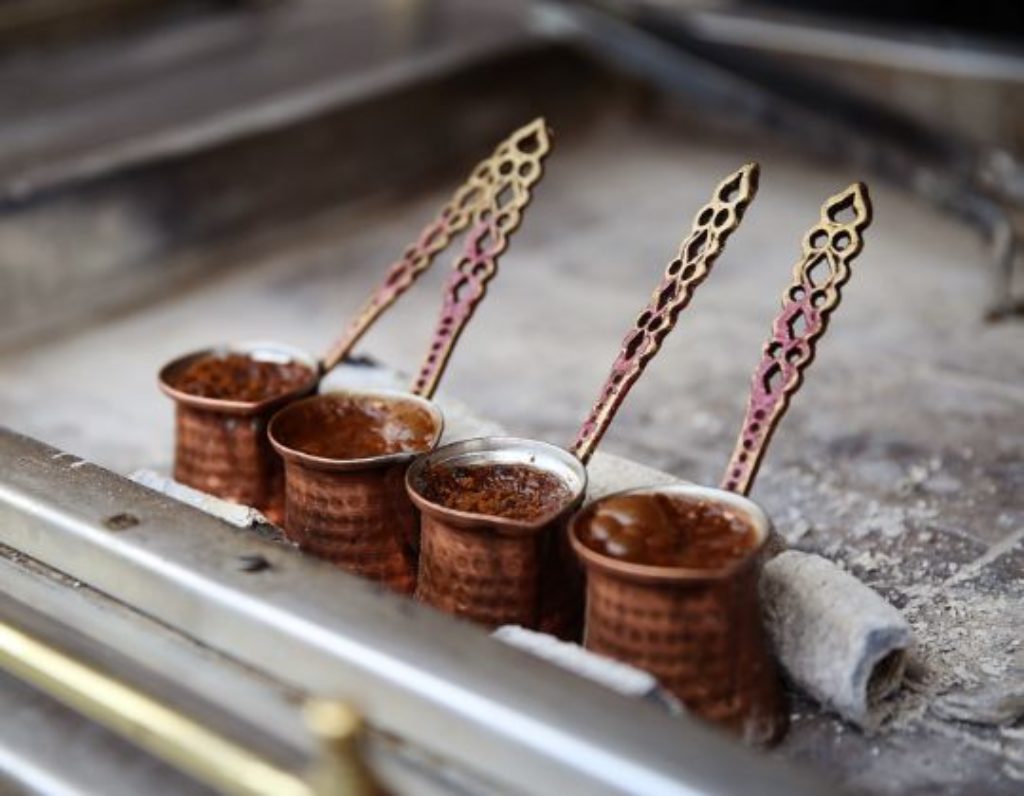
With a tenable reputation back home, it seamlessly invaded foreign countries. In fact, the first coffee house in Britain was opened by an Ottoman Jew in the mid 17th century. The menu’s main offering was Turkish coffee.
Turkish coffee has persisted in modern society and retained its importance. Outside Turkey’s borders, the drink has been rechristened to fit sentiments and political motives. In Greece, it has become the Greek Coffee and Bosnian Coffee in Bosnia & Herzegovina.
Are you wondering how Greek Coffee compares? Check out our article on Greek Coffee vs Turkish coffee and learn about the key differences between these extremely similar drinks.
What Is Espresso Coffee?
The Espresso machine was invented in 1901 by Luigi Bezzera and with it came the Espresso. It became incredibly popular in Milan and spread to other parts of Italy before taking over the world. Since it required a machine for coffee brewing, it became a suitable commercial option for cafes.

Over 120 years after its invention, this delicious drink has become the world’s most popular coffee. It has also become the base for many other coffee drinks like Cafe Latte, Cappuccino, and Cafe macchiato. Espresso’s hold on the modern coffee market is certainly unrivaled and Espresso machines have become paramount to every cafe.
Why Is It Famous?
After the espresso machine was invented in Italy, the new drink soared in popularity for most of the century. Naturally, the country’s culture became immersed in the drink and the goodwill of the beverage was spread to all Italian colonies in East Africa especially Somalia and Eritrea.
By the 1950s, espresso-based drinks like Cappuccino began catching waves home and abroad. The mix of frothy milk with a good pressurized coffee extraction created a new exciting dimension to the world of coffee.
Tourists visiting Italy made Espresso a point of contact with the culture and several Italian coffee shops began operation abroad. By the 1980s, Starbucks began serving cappuccino and espresso in their world-famous menus.
Do They Use the Same Coffee Beans?
Both coffee drinks can be prepared with any variety of beans. However, highly reputable beans like Arabica are preferred for the brewing process.
The best Turkish Coffee depends more on the drink’s preparation process and the culture surrounding it. Espresso is more centralized on the unique espresso machines and the prevalent Italian culture that heralded it in the early 20th century.

However, it is best to use certified Organic beans for your drink. The quality of your Turkish coffee and Espresso is at its highest with the most natural form of well-nurtured coffee. Using organic coffee beans means you avoid artificial fertilizers, pesticides and other dangerous chemicals.
Does Turkish Coffee and Espresso Use the Same Roast?
Espresso coffee is all about the machine’s unique preparation. There is no specific roast required to make a good extraction. In fact, the drink has several trends of roasts which are patronized in various regions.

For example, a dark roast is preferred in south Italy and a lighter roast is preferred across the country’s northern regions. Moreover, commercial cafes abroad offer a wide range of roasts.
Turkish Coffee can also be prepared with any roast, though a dark roast is renowned as the most suitable option for the beverage. This is because a dark roast allows the brew’s unique flavors to shine through. The roast disparity between Turkish coffee and Espresso is of little importance since Espresso can be prepared with any roast.
Do They Use the Same Grind Size?
When it comes to the grind size, the Turkish beverage is prepared with extremely fine grind coffee beans. In fact, Turkish coffee grinders were invented just for this purpose. There are several already-ground beans on the market for sale, but a good grinder can bring the process down to earth to produce an extra fine grind. Grinding your own beans adds to the entire traditional feel and guarantees a fresh cup.
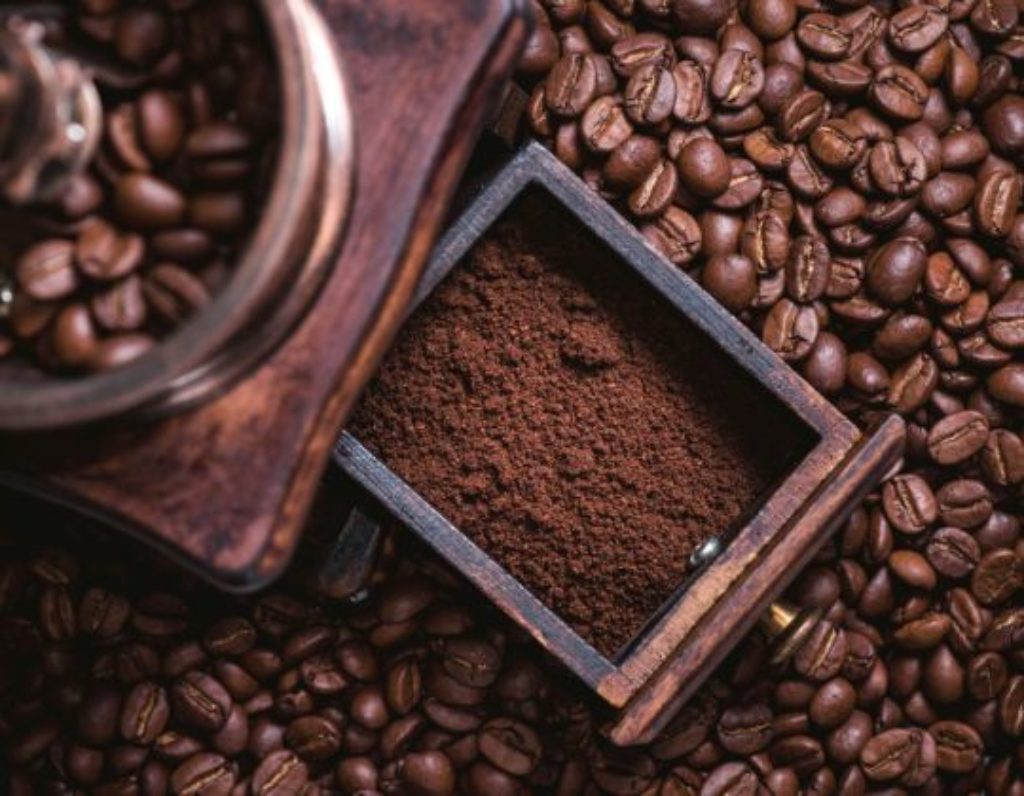
Although Espresso requires a fine grind, it can be slightly coarser than Turkish Coffee grinds. The grind of beans used in Espresso must be fine but only moderately like powdered sugar. A fine grind is ideal due to its short brew time in the Espresso machine.
There is definitely no need to have a separate grinder for Turkish coffee and Espresso. Just make sure that you can change the grind setting. A Turkish grinder is highly recommended for both drinks and usually has a setting to adjust grind size. These grinders will give you the most suitable grind for both Turkish coffee and Espresso
The Extraction Process
The extraction of Espresso is a calculated process, having the correct grind size, timing, and amount of coffee can produce the perfect shot. Espresso machines work by forcing hot water through finely ground beans using 9 -10 bars of pressure.

Having the wrong quantity of coffee can affect the shot quality, so one must be careful not to overpack or under pack the portafilter. The usual capacity of a double portafilter basket is 16-22g, any amount below or over this range will result in an uneven extraction.
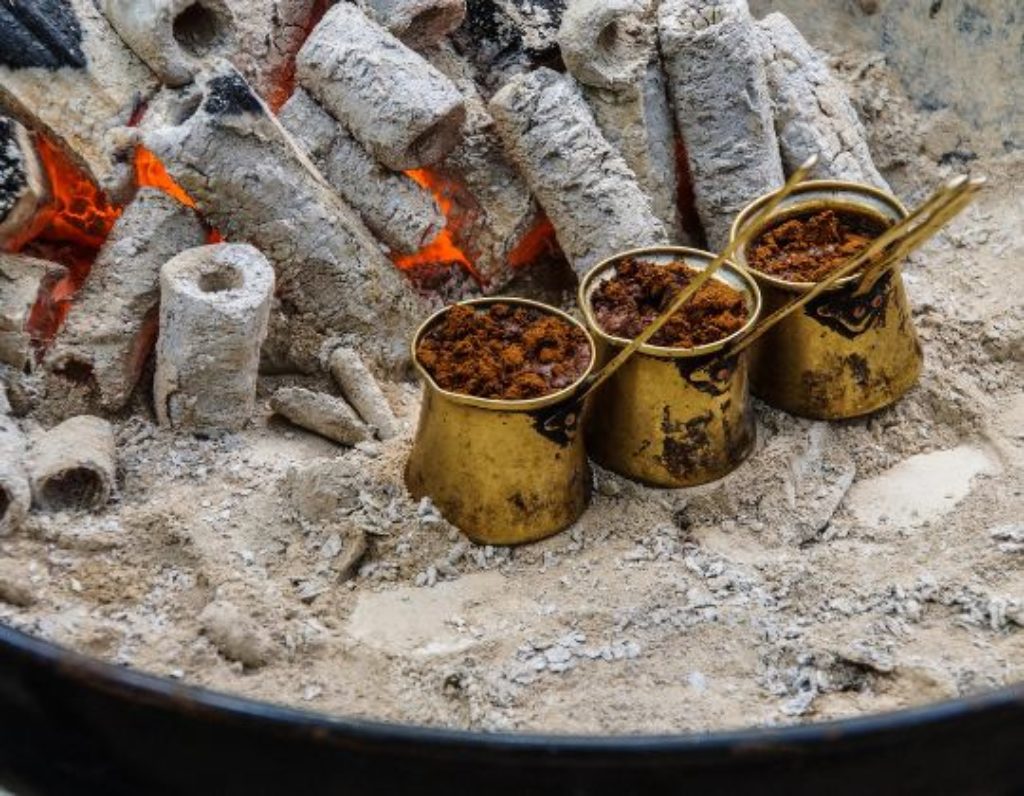
However, brewing Turkish coffee uses a manual process which involves boiling unfiltered ground coffee, water, and sugar in a Turkish coffee pot, known as cezve/ibrik. Once the mixture begins to froth, it is taken from the heat and served in Turkish coffee cups, also known as Mirra / Gawa (Arabic) or demitasse cups.
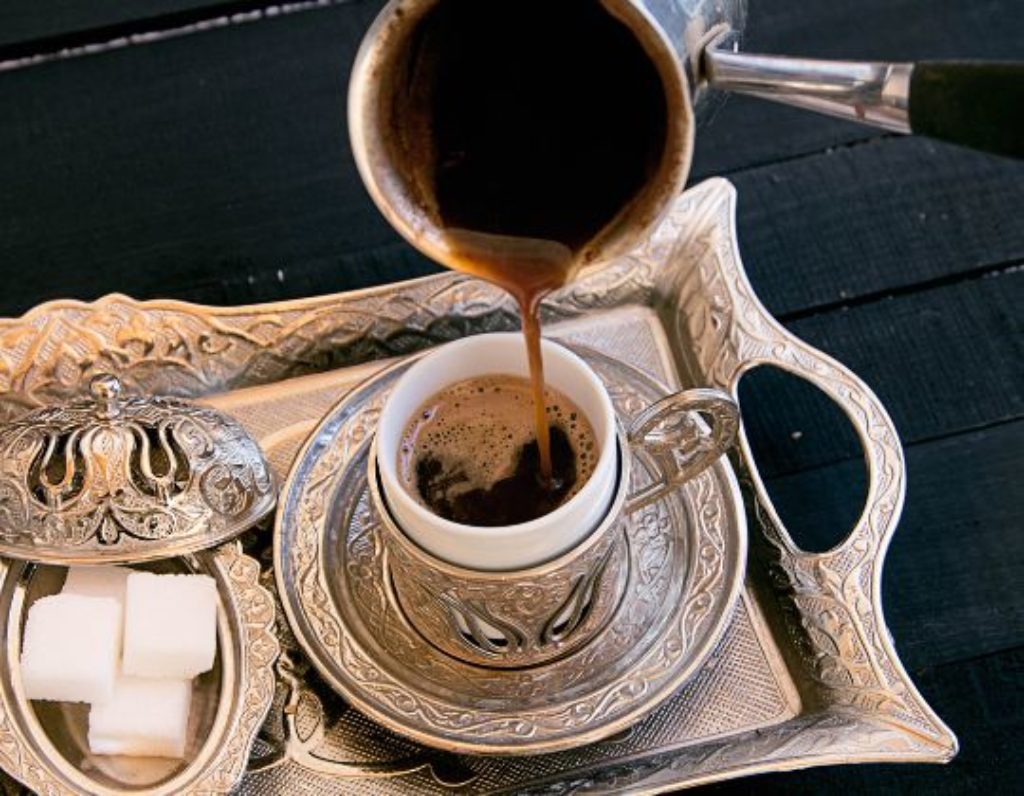
Quite clearly, the extraction process differs between Turkish coffee and Espresso. Espresso’s extraction is a meticulous process compared to the raw process of its Turkish counterpart. In this context, the Turkish coffee vs Espresso comparison upholds the ‘raw vs refined’ parallel.
Turkish Coffee vs Espresso Coffee: Head to Head
The main contrast between these two drinks lies in their distinct cultures and preparation process. Espresso has become the champion of the modern coffee world especially with its widely acclaimed commercial value, with many thanks to Starbucks and such. In fact, the several varieties like Cappuccino, Café Macchiato and Caffe Latte have made the drink quite essential to coffee lovers.
However, the Turkish beverage held a great dominance in the old times since its inception in the 15th century. It is a simpler and more traditional variety of coffee that was introduced before the likes of the espresso machine were invented. In fact, this can tip the scales on the Turkish coffee vs Espresso comparison depending on how you prefer to make your brew.
Caffeine

Turkish Coffee was considered a strong drink back in the Ottoman days and even became an alternative to alcohol. This was mainly due to its concentrated caffeine nature. Since the drink is prepared without filtering, it retains its caffeine content which is about 50 mg per ounce.
Espresso’s elaborate process involves forcing hot water through the coffee at high pressure which stimulates the espresso’s caffeine content. The average amount of caffeine in one ounce of Espresso amounts to 64 mg which is higher than Turkish Coffee’s 50 mg per ounce. However, this value may slightly increase or decrease depending on the roast and quality of the beans used in brewing.
Taste and Flavor

The Turkish drink’s traditional method of preparation gives a raw taste of satisfaction. Besides the original flavor profile of the coffee beans, it can be drunk unsweetened, or moderately sweetened. Due to its unfiltered nature, it has a distinct grainy taste as bits of the grinds remain in suspension, with some settling at the bottom of the cup.
Espresso coffee has a well-blended taste. Depending on the variety of coffee beans used for its brewing, it may contain distinct flavor notes like nutty, floral, fruity, etc. The drink can be sweetened by adding milk or sugar but a good Espresso drink must use well-roasted beans for a balanced taste.
Brewing Time

The Espresso machine typically takes about 25-30 seconds to brew. Any brew that takes a shorter or longer time to extract is the result of faulty preparation. Compared to the other preparation methods, Espresso is the fastest drink to make which has given it a sharp edge in the commercial space.
Meanwhile, brewing using a Turkish coffee pot requires boiling the mixture of coffee, water, and sugar (if any). This process takes between 7-10 minutes on the average since the water must reach boiling point. However, it is normal to remove the pot from the fire if its froth has already formed before the water reaches boiling point.
Besides its simple centuries-old method, Turkish Coffee Machines have become a modern trend. Thus, you can swiftly prepare this classic beverage with little hassle.
Can I Make Espresso With Turkish Coffee?
Both Turkish coffee and Espresso can be prepared with any variety of coffee beans. The Arabica bean is usually selected for its subtle acidity, medium body, and sweet flavor profile.
Quality coffee beans, an appropriate grind, and a well calculated process are the only requirements for a good brew. However, these two drinks do overlap in many ways.
Although you cannot make Turkish coffee with an Espresso machine, you can make use of a Turkish grinder to prepare the coffee beans for your Espresso machine. These types of coffee grinders allow you to accurately calibrate the grind setting to achieve a perfectly fine grind.
Wrapping It Up
Although these two coffee drinks come from distinct eras, both drinks have dominated the coffee world for a long time. The Turkish drink was the premium choice of every beverage lover between the 15th and 19th centuries. There was surely no Turkish coffee vs Espresso debate then, just the Turkish beverage and others.
The brew became a prime export of the Ottoman empire which played a great part in its popularity. However, the drink’s prominence has waned in the face of Espresso and other modern coffee drinks. Starbucks casuals of today still cluelessly blink at the million-dollar “What is Turkish coffee?” question.
Meanwhile, the rise of Espresso came at the dawn of the 20th century and has dominated the modern world till date. The drink’s popularity mainly benefits from the commercial advantage which the timely but costly espresso machines have. Amidst the infamous Turkish coffee vs Espresso drag, Espresso has clearly dominated the menus of today’s Cafe shops.
Editor’s Verdict
Turkish Coffee comes with a wholesome traditional feeling. Although its influence has waned in the face of modern beverages, the drink retains a prominent position in Turkish culture. Ceremonies such as weddings and fortune-telling involve the age-old Turkish beverage. Furthermore, it is a staple for tourists looking to embrace Turkish culture.
Espresso Coffee is truly an epitome of the modern times. The drink has continued to evolve in more ways than one ever since Luigi Bezzera invented the first machine in 1901. A fitting conclusion to the Turkish coffee vs Espresso comparison is that the latter boasts of a more refined taste with higher caffeine and a timely preparation process.
FAQs
Is Turkish coffee stronger than espresso?
Yes, the drink has a stronger taste than espresso due to its traditional preparation method which gives it a raw potent taste. However, Espresso contains more caffeine.
Is Turkish coffee the strongest coffee?
Yes, it’s much stronger than regular coffee due to its longer extraction time. Before the brewing process is completed, the water must reach boiling point. As a result, the extraction period is prolonged and the coffee retains a strong taste.
Can I use Turkish coffee instead of espresso?
Yes, It can be used instead of espresso. Both coffee drinks can be made from any variety of coffee beans. Depending on your preference, you can opt for either option.
Why is Turkish coffee so different?
It’s mainly different from regular coffee drinks because of its simple preparation. Moreover, its potent taste and unique culture is unlike any other coffee.






